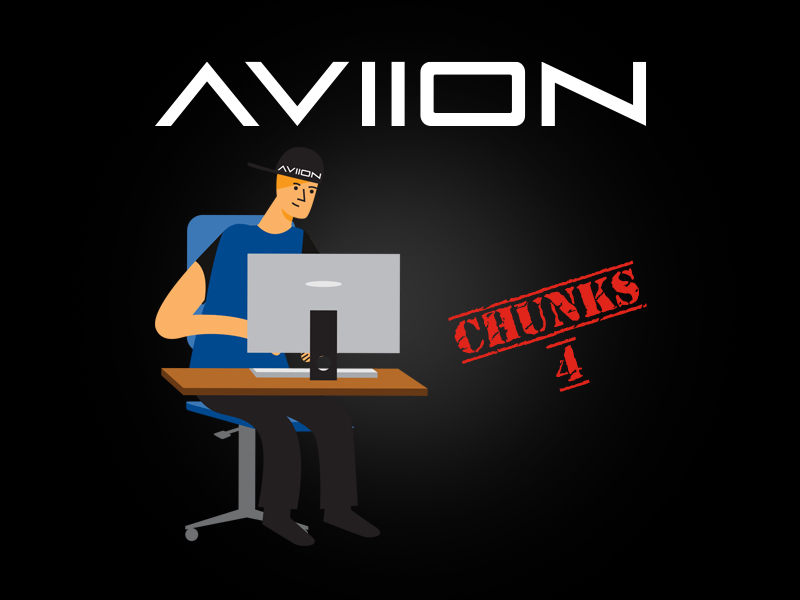In the latest AVIION Chunks from last week I had mentioned some questions regarding the coronavirus and its influence on the OTT services.
Due to the specific situation with more and more people staying in home the spikes in growth of streaming services usage are expected for sure. Will it last? For how long? How will the halt in production of new content influence the services mid and long term? What about the services that focus primarily on sports with so many events being cancelled?
Well, I gathered some data already published so we could get an idea what is actually going on.
Prediction is that, due to pandemic, SVOD services globally will see a 5% rise in number of subscribers by the end of the year. So, industry analytics are forecasting that by the end of the year SVOD services globally will have close to 950 million users which is an increase of 47 mil. compared to pre-corona forecasts. Also, prediction for SVOD users until 2025 is going to reach a staggering 1.4 billion users (rise in 620 mil over next 5 years).
US and China are the biggest SVOD markets totaling 65% of global SVOD subscribers. However Additional growth in Southeast Asia should push that percentage down to 55% in a 5 year period.
In the US, in the first 2 weeks of March, 85% of all streaming hours was via the Big 4: Netflix (37%), followed by YouTube (21%), Amazon Prime (16%), and Hulu (12%). Others (including HBO Now, Disney+, CBS All Access and more) saw a total of 12% of all streaming hours in the US.
However, the rise in viewing hours does not necessarily mean a bigger profit for the SVOD provider. With S in SVOD meaning Subscription, most of the services are fixed priced monthly service meaning that providers do not make more money with more viewing hours with existing viewers. Actually, with increased usage most providers have to deal with increased costs of operation. One such cost is the cost of delivery via CDN (Content Delivery Network). OTT providers that have their own CDNs (like Netflix, Amazon or YouTube) are in a better position to control their delivery costs than OTT providers that rely on third-party CDN providers.
What can be expected in mid to long term period? That predominately depends on how long people are going to be staying in self-isolation. The longer this period lasts the economies are going to take bigger hits which means a whole new set of challenges for the OTT market.
Currently, almost three quarters of US households subscribe to 1 or more SVOD services. The market is becoming saturated with new players just entered or scheduled to enter the market but there is still room for growth. Should there be economic pressure in the coming months or even longer a higher rate of cancellation of OTT services are expected.
Already, biggest hits are taking services focused on sporting events. With most of the events being cancelled there is simply no content which is predominantly consumed live. Some of the content providers are recycling their archive while others are providing these several months free of charge (Sky in UK for sports package, Sky Italy for premium, Canal+ in France). NBC’s Peacock OTT service was to have the biggest marketing push for the 2020 Olympics, which have been postponed for a whole year. Unfortunately, whatever happens the damage is already done we just have to see the extent after all this madness is behind us.
What about the AVOD services? Services like YouTube and Hulu that offer ad-based model as well, might see a rise in their ad revenues as viewing-hours increase. Of course, that will last as long as potential economic decline doesn’t cause advertiser to decrease their digital ad spending.
Finally, there is another big concern that is affecting everyone. I have mentioned that number one factor for retaining subscribers and decreasing churn is content. Right now, globally there is virtually no content production and if this situation persists in the longer period, we might see a lot of problems for content providers.
We can presume that the biggest players will be able to navigate successfully through upcoming times, especially services operated by larger parents like Amazon, Apple, AT&T with much larger revenue streams outside their OTT business.
Well, at least the theory that subscription services are better able to survive financial crisis than media linked to the advertising cycle will be put to test. The good thing is that the cost of most OTT services is such that it should not be “the first thing to go”. Also, if people are opting to save money and stay at home they are unlikely to give up on the source of entertainment unless they really have to.
With some extra time on their hands people are getting the chance to explore more OTT apps and in more detail. They will definitely have a better idea of what they like about certain apps and what they dislike. There will be plenty of new information for the OTT UX/UI designers and product managers.
I would dare to say that with viewers there is no brand loyalty and no sticking to a certain OTT provider. Successful OTT services constantly deliver content, through stable apps with great UI/UX experience, and that is what keeps the viewer using it. If you are looking for a stable, feature-powered OTT platform with great, flexible UX/UI that fits your needs, to put your content on and deliver it to the world let us know at info@aviion.tv. We can help you create the next level OTT experience for your viewers.

